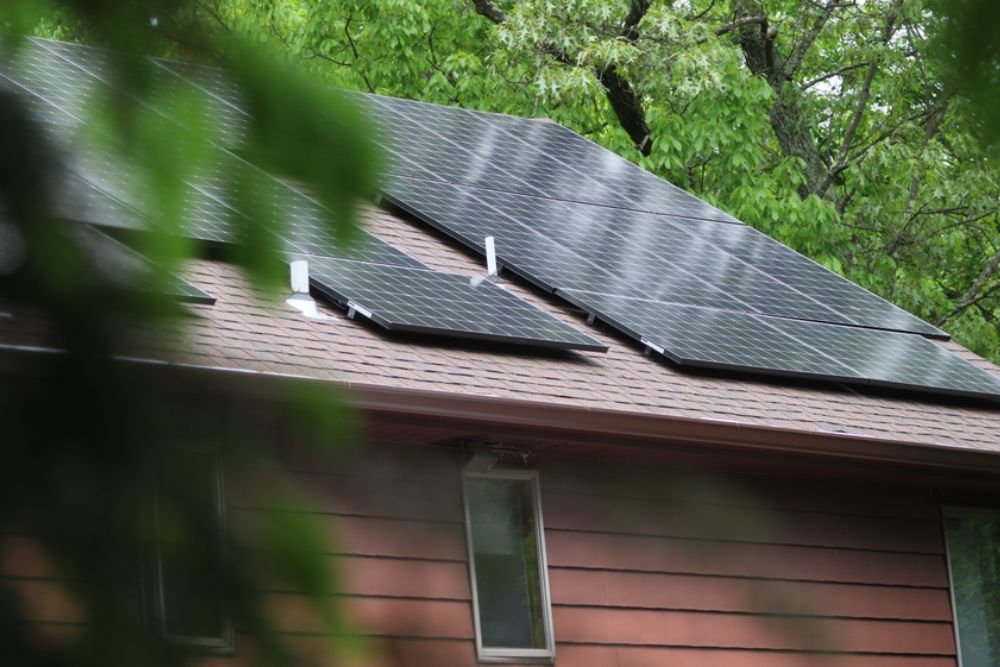Most people think of investments in terms of stocks, retirement accounts, or property — but some of the smartest investments you can make are the ones that cut your monthly bills. By spending a little more upfront on energy efficiency, home upgrades, or technology, you can create lasting savings that free up money month after month.
From utilities and groceries to transportation and insurance, recurring costs add up fast. The good news? Many of them can be strategically reduced with one-time purchases that pay for themselves over time. Here’s a breakdown of the smartest investments that can help you lower your monthly bills and boost your financial breathing room.
1. Upgrade to a Smart Thermostat
One of the quickest ways to cut heating and cooling costs is to install a smart thermostat. These devices learn your habits, adjust automatically, and give you greater control over your home’s temperature — even when you’re away.
Why It Saves:
-
Cuts heating and cooling usage when you’re not home
-
Adapts to seasonal changes and preferences
-
Can reduce energy bills by 10–20%
Models from brands like Nest or Ecobee often pay for themselves in under two years, especially if you live in a region with temperature extremes.
2. Install Energy-Efficient LED Lighting
Swapping out old incandescent bulbs for LED bulbs is one of the cheapest investments you can make — and it has long-term benefits.
Savings Highlights:
-
LEDs use up to 85% less electricity
-
Last 10–25 times longer than traditional bulbs
-
Reduce replacement frequency and waste
Replacing the bulbs in your most-used fixtures — kitchens, hallways, bathrooms — can noticeably reduce your monthly energy bill.
3. Seal Air Leaks and Insulate Your Home
A poorly insulated home leaks heated or cooled air, forcing your HVAC system to work harder. Investing in better insulation and air sealing can lead to significant utility savings.
Where to Start:
-
Insulate your attic and walls
-
Seal gaps around doors, windows, and baseboards
-
Use weatherstripping and caulk
Professional insulation upgrades often qualify for energy rebates and can save hundreds annually in heating and cooling costs.
4. Buy a Water-Efficient Showerhead and Faucets
Upgrading to low-flow showerheads and faucet aerators can drastically cut your water usage — and your water bill.
Water-Saving Benefits:
-
Reduces water usage by up to 50%
-
Lowers hot water heating costs
-
Easy DIY installation
These fixtures are inexpensive, effective, and often come with EPA WaterSense certification, ensuring strong performance and savings.
5. Use Smart Power Strips or Timers
Many electronics draw power even when not in use. Known as “phantom load,” this standby usage can account for up to 10% of your electricity bill.
Smart Power Solutions:
-
Smart power strips cut power to devices when they’re idle
-
Timers or smart plugs turn off appliances at scheduled times
Use them for TVs, gaming consoles, routers, and chargers — and watch your electricity bill drop without changing your habits.
6. Upgrade to Energy Star Appliances
Replacing outdated appliances with Energy Star-rated models might require a larger upfront cost, but the savings over time are significant.
Best Appliance Upgrades:
-
Refrigerator
-
Dishwasher
-
Washing machine
-
Dryer
-
Air conditioner
Newer models use far less electricity and water, and many utility companies offer rebates for upgrading to efficient models.
7. Invest in Solar Panels (Where Feasible)
If you live in a sunny region and plan to stay in your home long-term, solar panels can drastically reduce — or eliminate — your electricity bill.
Why It’s Worth It:
-
Reduces reliance on the grid
-
Federal and state tax incentives available
-
Break-even point often around 6–10 years
Many providers also offer solar leases or power purchase agreements (PPAs) with no upfront cost, letting you benefit immediately from lower bills.
8. Switch to a Prepaid Cell Phone Plan
One often-overlooked recurring expense is your phone bill. Many people overpay for data and features they rarely use.
Lower Your Cell Bill By:
-
Switching to prepaid or pay-as-you-go plans
-
Using Wi-Fi calling and messaging
-
Avoiding premium carrier contracts
Brands like Mint Mobile, Visible, or Tello offer high-speed data plans for as little as $15–$30/month, often with no hidden fees.
9. Start a Home Garden or Use Subscription Groceries Wisely
Groceries are a recurring expense that continues to rise. A small investment in home gardening or smarter grocery planning can help.
Money-Saving Tips:
-
Grow herbs, greens, and veggies in small containers
-
Use meal planning apps to avoid waste
-
Join bulk-buying clubs or subscribe to affordable meal boxes
A $30 herb garden kit can save you double that over a few months — and it adds flavor to meals without extra cost.
10. Shop Around for Insurance Annually
Car, home, renters, and life insurance premiums vary widely. Comparing providers once a year can save hundreds.
Smart Insurance Strategies:
-
Bundle home and auto for discounts
-
Raise deductibles if you have emergency savings
-
Use comparison tools or a broker
Even a small premium drop of $20–$50 per month across policies adds up to major savings over the year.
11. Install a Programmable Irrigation System
If you spend money watering your lawn or garden, a smart irrigation system can reduce waste and lower your water bill.
Benefits:
-
Waters plants only when needed
-
Adjusts based on weather
-
Can reduce outdoor water use by up to 50%
Great for homeowners in dry or drought-prone areas, these systems are easy to manage via smartphone apps.
12. Buy a Deep Freezer for Bulk Savings
A standalone freezer lets you buy in bulk when items are on sale, store leftovers, and prep meals in advance — all of which lower your food expenses.
Why It Works:
-
Stock up on meats, frozen produce, or batch-cooked meals
-
Take advantage of bulk store memberships
-
Reduce food waste
Though an upfront cost of $200–$400, it can save you much more in reduced grocery trips and impulse food buys.
13. Automate and Review Your Subscriptions
From streaming services to cloud storage, subscription creep is a silent bill killer. Use tools or manual tracking to cut the clutter.
Action Plan:
-
Review monthly statements for recurring charges
-
Cancel unused or duplicate subscriptions
-
Use subscription management apps like Truebill or Rocket Money
The average household can reclaim $20–$100/month by cutting out forgotten subscriptions.



